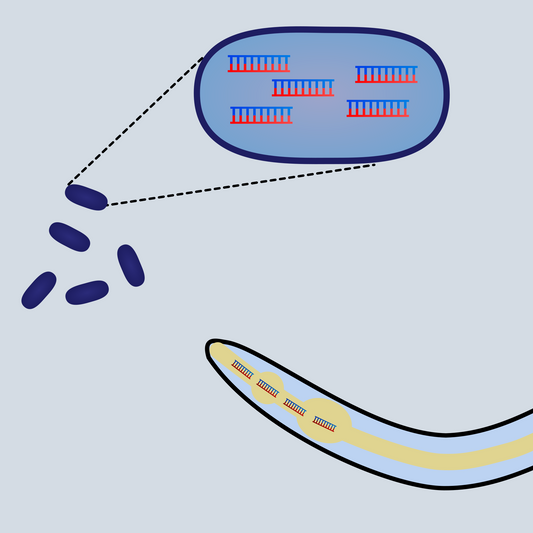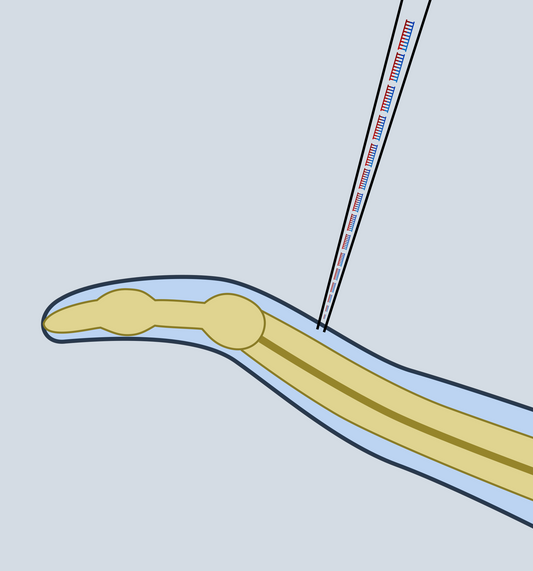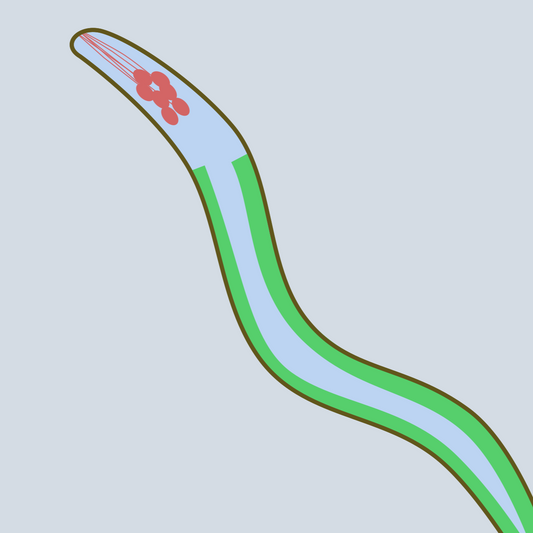Collection: C. elegans RNAi Services
RNA interference (RNAi) in Caenorhabditis elegans has significantly advanced genetic research by offering a versatile and efficient method for gene silencing, thereby enhancing our understanding of gene function and regulation.
In C. elegans, RNAi is initiated when double-stranded RNA (dsRNA) is introduced into the
organism. The dsRNA is processed into short interfering RNAs (siRNAs) by the enzyme Dicer. These siRNAs are then incorporated into the RNA-induced silencing complex (RISC), guiding the complex to complementary messenger RNA (mRNA) molecules, which are subsequently degraded, leading to gene silencing.
Several methods have been developed to induce RNAi in C. elegans, including feeding,
microinjection, and soaking techniques. A notable feature of RNAi in C. elegans is its systemic nature; gene silencing can spread from the initial site of double-stranded RNA (dsRNA) introduction to other tissues. Additionally, RNAi effects can be inherited by subsequent generations, allowing for the study of gene function over multiple life cycles.
-
Feeding RNAi
Vendor:KASBioInnovationsRegular price From $300.00 USDRegular priceUnit price / per -
Microinjection RNAi
Vendor:KASBioInnovationsRegular price $600.00 USDRegular priceUnit price / per -
Tissue-specific feeding RNAi
Vendor:KASBioInnovationsRegular price From $300.00 USDRegular priceUnit price / per



